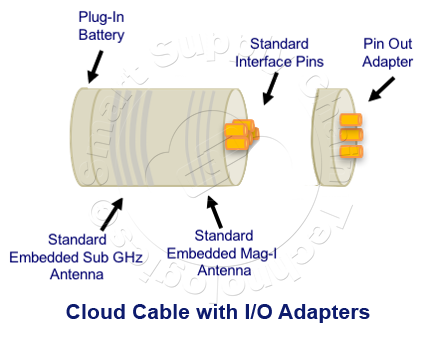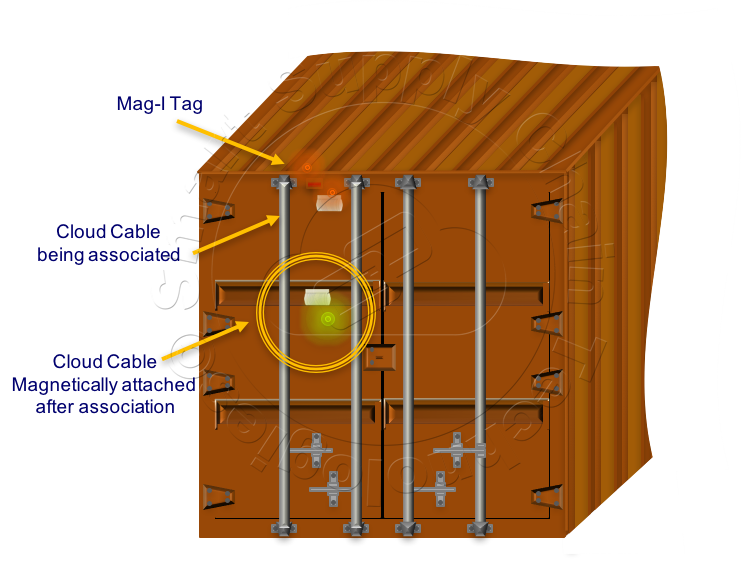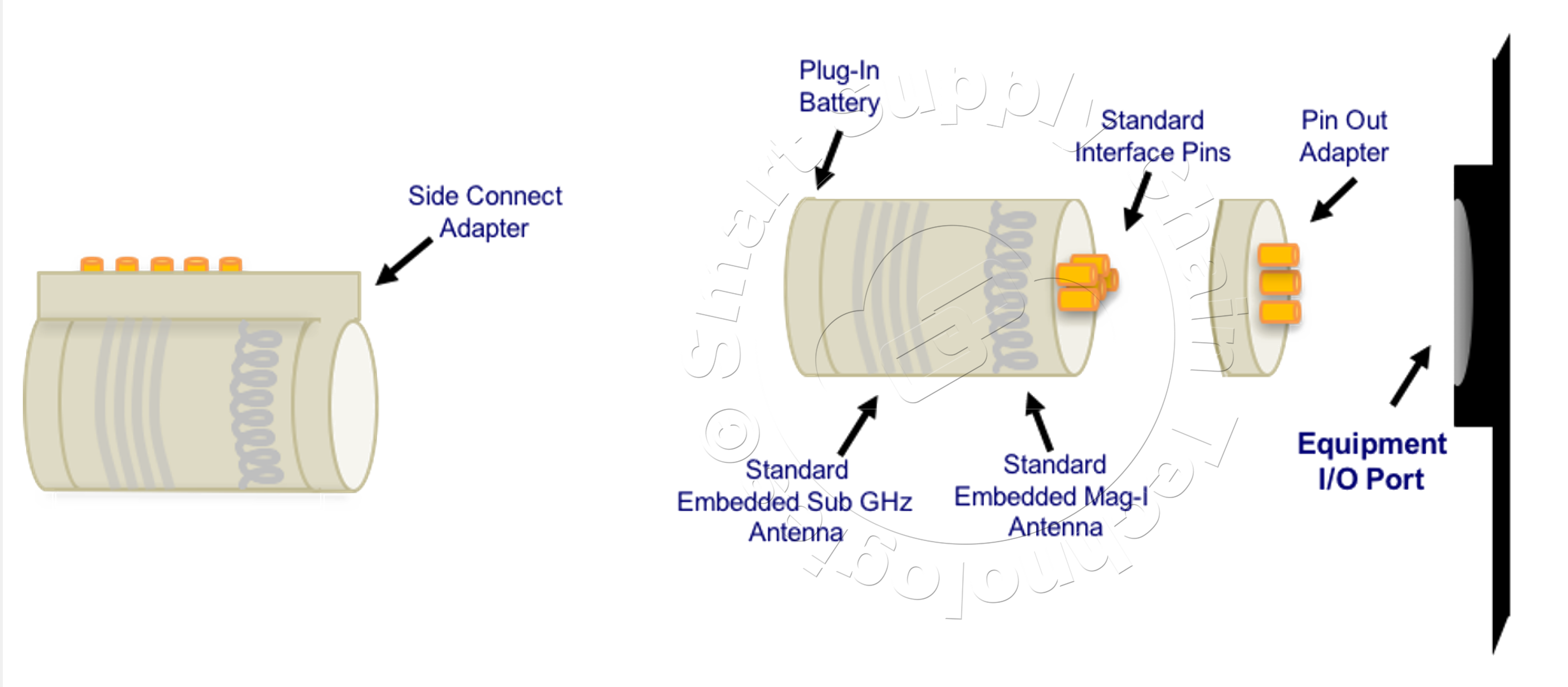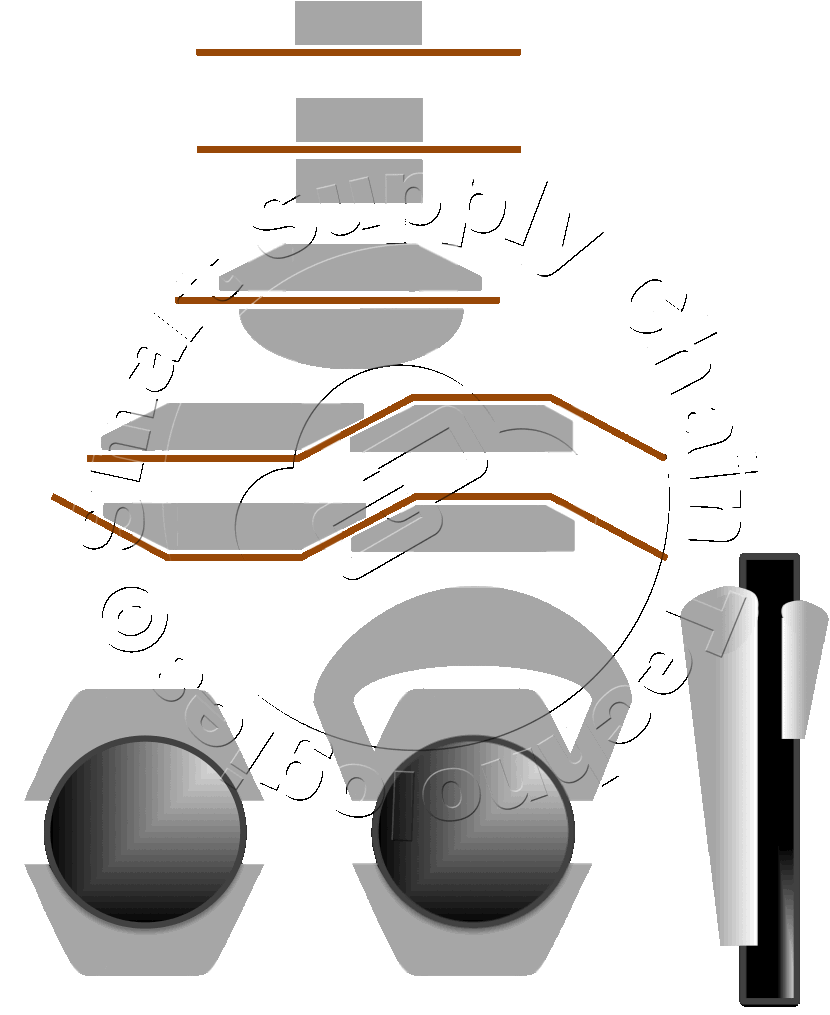The S2CT Cloud Cable is our entry level Asset Monitor product. Its basic intent is to connect disjoint points together, wirelessly, using HME Sub GHz(1) communications. All S2CT Cloud Cables are programmable microcontroller based devices, have plug-in Battery Power Systems, integrated Sub GHz subsystems with an embedded Sub GHz antenna, integrated Magnetic Inductance (Mag-I(2)) with an embedded Near Field Mag-I antenna, a standard set of six programmable Input / Output pins,  a minimum of 8Kbytes of non-volatile RAM for Data Logger (64 pings). The standard Battery Power System can house up to 3 AA batteries with "Smart" Advanced Power Management for extended life. Standard I/O adapters are available for USB, Serial, GPIO and UART data plugs. Entry level Simple Cloud Cables are intended to communicate through Sub GHz to Wi-Fi enabled Cloud Cables or directly to Sub GHz enabled Wi-Fi Access Points. Simple Cloud Cables will sell for around $25 USD and Wi-Fi enabled Cloud Cables for around $30 USD. A single standard 802.11b/g/n Wi-Fi Access Point can provide network communications to hundreds of Cloud Cables in its field of coverage.
a minimum of 8Kbytes of non-volatile RAM for Data Logger (64 pings). The standard Battery Power System can house up to 3 AA batteries with "Smart" Advanced Power Management for extended life. Standard I/O adapters are available for USB, Serial, GPIO and UART data plugs. Entry level Simple Cloud Cables are intended to communicate through Sub GHz to Wi-Fi enabled Cloud Cables or directly to Sub GHz enabled Wi-Fi Access Points. Simple Cloud Cables will sell for around $25 USD and Wi-Fi enabled Cloud Cables for around $30 USD. A single standard 802.11b/g/n Wi-Fi Access Point can provide network communications to hundreds of Cloud Cables in its field of coverage.
S2CT Cloud Cables will be available in a variety of configurations and can easily be customized for a specific task. Cloud Cables can be permanently or temporarily installed on or in an asset, containers, truck trailers, truck cabs, chassis, railway cars, vessels, gensets, spreaders, cranes, forklifts, pallets, warehouses, shipping depots, factory floors, truck cabs, cold storage units, dry storage units, etc., the list is only limited by one's imagination.
Cloud Cables can be installed in an asset by themselves or as "Masters" in local-area networks of Cloud Cable. A Cloud Cable local-area network is typically comprised of a master unit and a number of disjoint Cloud Cable slaves. Slave Cloud Cables are placed in the same general area as the master but in locations appropriate for their specific tasks. A Cloud Cable master might be collecting temperature data from its own integrated sensor and from slave Cloud Cables installed in the four corners of a trailer's cargo area. The Cloud Cable master aggregates all of this temperature data and communicates it to an Asset Management System where a profile of the temperature gradient across the cargo area can be developed and analyzed.
Cloud Cables can be permanently installed on a specific asset or moved from one asset to another. In either case, it is important to know which asset the Cloud Cable's data is associated with. To this end, an inexpensive Mag-I Tag, with a unique embedded digital ID, can be permanently attached in a convenient location on an asset. When a Cloud Cable is installed or moved to a new asset,  the installer simply touches the Cloud Cable to the Mag-I Tag and waits a second or so for the Cloud Cable's "Association" LED to blink. When the Cloud Cable is touched to a Mag-I Tag, the Mag-I Tag ID is transferred and stored in the Cloud Cable. That Mag-I ID is then inserted in all data packets that the Cloud Cable communicates to the asset owner's Asset Management System. The Asset Management System can either use the Mag-I ID to distinguish different assets or cross reference them to other asset IDs already used within the asset owner's workflow, a container number for example.
the installer simply touches the Cloud Cable to the Mag-I Tag and waits a second or so for the Cloud Cable's "Association" LED to blink. When the Cloud Cable is touched to a Mag-I Tag, the Mag-I Tag ID is transferred and stored in the Cloud Cable. That Mag-I ID is then inserted in all data packets that the Cloud Cable communicates to the asset owner's Asset Management System. The Asset Management System can either use the Mag-I ID to distinguish different assets or cross reference them to other asset IDs already used within the asset owner's workflow, a container number for example.
Cloud Cables must also be flexible enough to be deployed in a variety of asset applications, from simple monitoring and tracking to interfacing to sophisticated asset control systems, a cold storage unit's refrigeration controller for example. Simple monitoring and tracking only requires that the Cloud Cable and its "paired" wireless sensors, if there are any, be appropriately installed on or in the asset. Appropriate means in the best location on or in an asset to execute its programmed task and in some cases, it means out of harm's way, blended into the asset's superstructure such that its presence is not obvious. To these ends, Cloud Cables are completely compatible with S2CT's component modularity and universal enclosure concepts(3).
In sophisticated deployments, where the Cloud Cable is a conduit between the cloud and another electronic device, the Cloud Cable must be flexible enough to be connected to any target interface or connector. Cloud Cables meet this challenge with extensive and flexible I/O capability.  Our Simple Cloud Cable will provide 6 to 8 GPIO (General Purpose Input Output) pins which can be programmed to interface to a wide range of digital interfaces. This is mostly a physical limitation of the number of pins that can be made available in a small form factor.
Our Simple Cloud Cable will provide 6 to 8 GPIO (General Purpose Input Output) pins which can be programmed to interface to a wide range of digital interfaces. This is mostly a physical limitation of the number of pins that can be made available in a small form factor.
You may refer to our White Paper entitled "The Amazing Little Cloud Cable" or Contact Us for more information.
(1) Sub GHz is a bidirectional communications frequency that is best suited for communications in and around Highly Metalized Environments (HME). The actual frequency selection is driven by the reliability of the communications and the power consumed to undertake them. S2CT has developed an "Open Protocol Standard" called HME Sub GHz, 433 MHz for this purpose. Alternatively, the new Sub GHz 900 MHz Wi-Fi 802.11ah IEEE Standard is another good choice and is currently being analyzed by S2CT and Hong Kong City University.
(2) Near-Field Magnetic Inductance is very similar to the technology that Samsung and others use for secure wireless payment transactions. Fundamentally, two magnetic fields intersect to form a continuity. In this use model, one field emanates from one device and a second field emanates from a second device. When these fields intersect they form a continuity that allows the devices to communicate with one another. Here, one device provides its ID to a second device. The second device, using some methods, verifies that the ID is authorized for communications and associates it in its communications network for future communications.
(3)  The S2CT Universal Enclosure concept is based on a standard core IP-67 enclosure, safely enclosing the core components of an electronic device, that is designed to be further encased in an exoskeleton of arbitrary exterior shape specifically designed to form fit to a targeted application. A Cloud Cable or other Asset Monitor designed to blend into the superstructure of a cargo container so as not to call attention to its presence is an example.
The S2CT Universal Enclosure concept is based on a standard core IP-67 enclosure, safely enclosing the core components of an electronic device, that is designed to be further encased in an exoskeleton of arbitrary exterior shape specifically designed to form fit to a targeted application. A Cloud Cable or other Asset Monitor designed to blend into the superstructure of a cargo container so as not to call attention to its presence is an example.